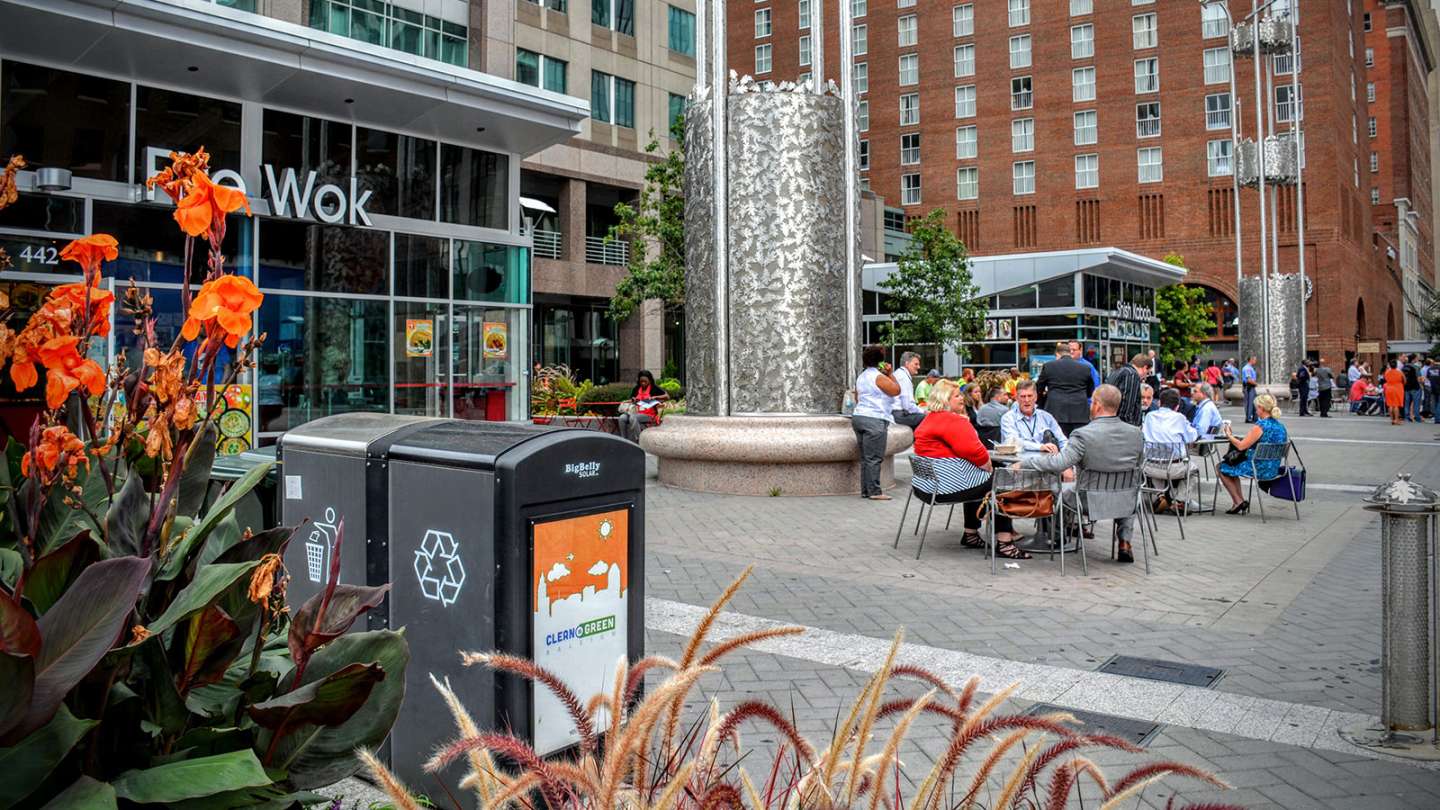By: Jordan Meadows
Staff Writer
The Raleigh City Council’s Economic Development and Innovation Committee voted last Tuesday to approve the first phase of the long-anticipated Fayetteville Street “streetscape” plan, marking a major step toward reshaping one of downtown Raleigh’s most iconic corridors.
The overall project will be completed in two main phases, each expected to cost over $3 million, with potential for expenses to climb as much as 25% higher as designs are finalized.
The first phase, now partially approved, focuses on redesigning portions of Fayetteville Street between City Plaza and the 100 block east side, including removing granite walkways and planters to expand pedestrian space; upgrading street lighting, pavement, and public art installations; replacing benches, chess tables, and waste receptacles, with costs nearing $200,000 per block; and introducing more seating, greenery, and shade structures to support outdoor business activity and comfort.
Deputy Planning and Development Director Ken Bowers described the project as an investment in both functionality and experience.
“This is not just Raleigh’s Main Street, but arguably North Carolina’s Main Street as the state capital,” Bowers said. “We want a vibrant public realm full of people enjoying themselves and going about their business—both day and night.”
At the heart of the revitalization effort is City Plaza, the city’s primary gathering space and the site of numerous festivals and community events throughout the year. Short-term improvements totaling roughly $1 million will be implemented using existing city resources. These changes are designed to show visible progress while additional funding is secured for larger construction phases.
Committee members also discussed plans for a permanent outdoor performance stage near City Plaza, estimated at $1.65 million, that would host small concerts and community events. The discussion included details about stage shading, design, and size to ensure the project addressed multiple needs—comfort, function, and aesthetics.
Recent improvements have already addressed some community concerns. Earlier this year, the city installed new “bigger-than-umbrellas” shade structures to help counter extreme summer heat. Pavement temperatures on City Plaza reached 123°F in August 2025.
“During the hot weather months, the lack of shade on the plaza has been a deterrent,” Bowers noted. “We’re hoping these new structures will encourage people to come down, enjoy the shade, and have lunch or gather outdoors.”
A top public request driving the redesign has been more space for outdoor dining. Under the current layout, restaurants only have about four feet of sidewalk seating area—barely enough for a small table. The new plan doubles that space to eight feet.
"You see cranes in the sky. You see construction. You see bulldozers. This is all positive," Cowell said. "We are investing to increase prosperity in this area,” Mayor Janet Cowell said.
Council Member Mitchell Silver (District A), who also serves on the Growth and Natural Resources Committee, underscored the need for flexible funding categories rather than locking funds into narrowly defined projects.
“This approach gives us the ability to adapt as costs or priorities change,” Silver said.
Art will also play a defining role in the project. Committee members discussed installing evergreen public artworks—durable pieces that celebrate Raleigh’s identity as the City of Oaks and aid visitors in wayfinding.
Jonathan Lambert-Melton, At-Large Council Member and Vice-Chair of the Transportation and Transit Committee, added that all artistic features should be “practical, cost-effective, and inviting.”
With the first phase now approved, Raleigh is officially moving forward on one of its most visible downtown investments in recent years. Committee Chair Jonathan Lambert-Melton summarized the moment as a milestone for the city’s growth and creativity:
“This plan is about creating a downtown where art, business, and community are in the open air. Fayetteville Street should reflect the energy and ambition of Raleigh itself.”
The full City Council will review funding allocations for the second phase in upcoming sessions, likely to take place in 2026. Meanwhile, design work and early construction for the approved first phase are expected to begin in the coming months.

